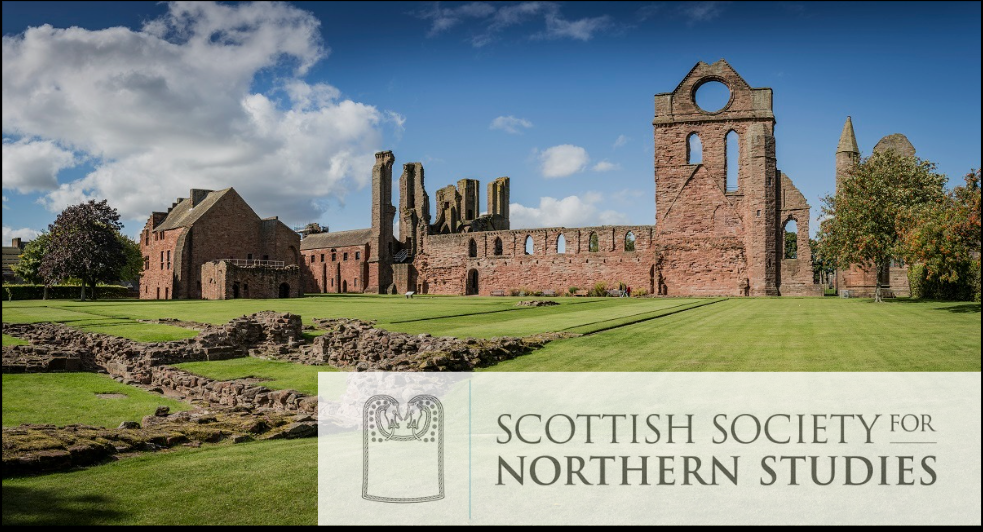
SSNS 2025 Day Conference
We are happy to announce our next in-person conference at 10:45 GMT on 22nd November in Arbroath. The conference will be followed by an optional visit to the St Vigeans Sculptured Stones Museum. There is an extra cost of £5 for this, payable at the museum. However, for members of Historic Scotland, those with an Explorer Pass, or life members of English Heritage, Cadw or Manx it is free of charge. As this is a special opening, anyone wishing to purchase books from the Museum’s shop is asked to bring the correct change with them.
For paid-up SSNS members, we will hold our Annual General Meeting prior to the conference at 9:30GMT. Details for the AGM will be released to members on the 14th Nov. 2025.
The full conference programme is as follows:
ANNUAL GENERAL MEETING (9:30-10:00)
-
- 9:30 Annual General Meeting
- (details to be released on the 14th Nov. 2025)
- 9:30 Annual General Meeting
CONFERENCE SCHEDULE (10:45-15:00)
-
- 10:45 Guests arrive / Coffee
- 11:00-11:05 Welcome
- 11:05-11:45 ‘The Early Medieval Sculpture of Angus: An overview’ – John Borland.
- 11:45-12:25 ‘Angus in the 1st millennium AD’ – Nicholas Evans.
- 10:45 Guests arrive / Coffee
-
- 12:25 Lunch
-
-
- 13:05-13:45 ‘Norse Law on the Go: Temporary Places of Assembly in the Contemporary Kings’ Sagas’
– Peter Randall. - 13:45-14:55 Hermann Pálsson Memorial Lecture, Professor Alexandra Sanmark – ‘Sea travel and
communication routes in Scandinavian Scotland’.
- 13:05-13:45 ‘Norse Law on the Go: Temporary Places of Assembly in the Contemporary Kings’ Sagas’
-
-
- 14:55 Summing-up: Alan Macniven
-
- 15:30 St Vigeans Sculptured Stones Museum (1.6 miles away: 1/2 hour walk or short drive)
SPEAKERS – abstracts & biographies
John Borland
The Early Medieval Sculpture of Angus: An overview.
Abstract: Pictland stretched from the shores of the Forth to the Shetland Islands, from Buchan to the Outer Hebrides. One of the key indicators of its extent is the presence of Pictish sculpture. Yet within this expanse there are noticeable regional differences in the sculptural record. This paper will take a brief overview of the Angus assemblage, put it into context with its neighbours to the north, south and west and then examine some of the county’s sculptural highlights.
Bio: John Borland worked as an archaeological surveyor for 36 years, primarily with the Royal Commission on the Ancient and Historical Monuments of Scotland (RCAHMS) and latterly with Historic Environment Scotland (HES). He retired as Measured Survey Manager in 2020. During his career John had the opportunity to survey almost every type of archaeological and architectural monument, from Neolithic chambered cairns to WWII coastal batteries. However he had (and continues to have) a particular interest in Scotland’s unparalleled corpus of Pictish and Early Medieval sculpture, recording well over one thousand carved stones of that period. John was also Editor and President of the Pictish Arts Society for 11 and 10 years respectively.
Nicholas Evans
Angus in the 1st millennium AD
Abstract: In this paper I will discuss the development of Angus from the time of the Roman invasion to the creation of Angus as a distinct region by the year 1000. In that period, there were many
developments, many of which can only be dimly perceived through the textual sources which are the focus of this paper. It will consider Angus’s position in the territorial and political geography of Pictland, and it how came to be part of the Pictish overkingdom after a period of Northumbrian domination. The position of development of Angus as a separate region by the early tenth century, in the context of the transformation of Pictland to Alba, and from a Pictish-speaking to a Gaelic-speaking society, will also be discussed, as will some observations will be made on the place-names and territories of the area, working back from the later evidence. The paper will show how the people of Angus contributed to many of the main developments of this millennium of Scottish history.
Bio: Nicholas Evans is a Research Fellow in the Department of Archaeology at the University of Aberdeen. He has published on the ancient and early medieval history and sources of the Celtic-
speaking peoples of Britain and Ireland, including recent research on the southern Picts.
Peter Randall
Norse Law on the Go: Temporary Places of Assembly in the Contemporary Kings’ Sagas
Abstract: The Old Norse-Icelandic sagas of contemporary Norwegian kings refer to over a hundred public assemblies held within the Norwegian realm between 1177 and 1276. The majority of these are at known assembly sites which are identifiable in the landscape, particularly top-level sites of legal assembly or royal inauguration for the law provinces of Norway such as the Eyraþing, the Gulaþing and the Borgarþing. Numerous assemblies, however, are attested in these sagas but without place-names corresponding to known assembly-sites. This paper will focus on temporary
places of assembly used by the royal retinue (ON hirð) and troop (ON lið) as described in Sverris saga, Bǫglunga sǫgur and Hákonar saga Hákonarsonar. To examine these temporary places of
assembly, I will consider that which can be discerned regarding their geography and cultural significance at the time of the saga’s composition, as well as the literary representation of these
places by the composer of the saga.
Bio: Peter Randall is a PhD student with the Institute for Northern Studies at the University of the Highlands and Islands. He is currently writing his doctoral thesis on places of assembly in the
contemporary kings’ sagas using a combination of text-based research, toponymy and landscape archaeology. In addition to working on this research, Peter is currently the secretary for the Scottish Society for Northern Studies.
Alexandra Sanmark
Sea travel and communication routes in Scandinavian Scotland.
Abstract: This paper will investigate the relationship between land and sea in Scandinavian Scotland. Much research on Norse communication using boats has focused on sea voyages, with some
attention paid to travel along the major rivers in the east. This paper will address two aspects that are still underexplored: the identification and use of portages and smaller, inland waterways. There is increasing evidence for regular usage of portages and inland waterways in Scandinavian Scotland, found e.g. in sagas, place-names, topography and through archaeological fieldwork. Results of new fieldwork in Orkney, carried out within the project Connectivity and Communication in Norse Orkney, will be presented. This work, adding to a water route identified in 2020, provides further insight into inland travel by boat and the wider Orkney landscape of the past. A survey of water routes and portages across Scandinavian Scotland will also be presented and analysed. Some of these routes stretch across whole islands, while others are shorter. By identifying these different modes of travel it can be suggested that islands were not viewed as ‘blocks’ of land that could only be crossed on foot or horseback. Instead, land and sea should be seen as two integrated parts, with water routes providing access from the sea to inland settlements and other key sites. As a consequence, traditional maps providing divisions between land and sea must be reconsidered.
Bio: Alexandra Sanmark is Professor of Medieval Archaeology at the Institute for Northern Studies, University of the Highlands and Islands. She has recently led a number of research projects focusing on travel and communication in Scandinavia and the North Atlantic, such as AHRC/DFG-funded The Norse and the Sea which focuses on Viking Age settlement and maritime connections in Scotland and Royal Society funded Communications in Norse Orkney. In addition, she is the researching royal inauguration sites and rituals as well as medieval sites of execution. Another research interest is women and gender in the Viking Age. Recent publications include ‘Norse Navigation in the Northern Isles’ in the Journal of the North Atlantic, co-written with Shane McLeod and the co-edited volume The Hidden Lives of Viking Women (Oxbox).

